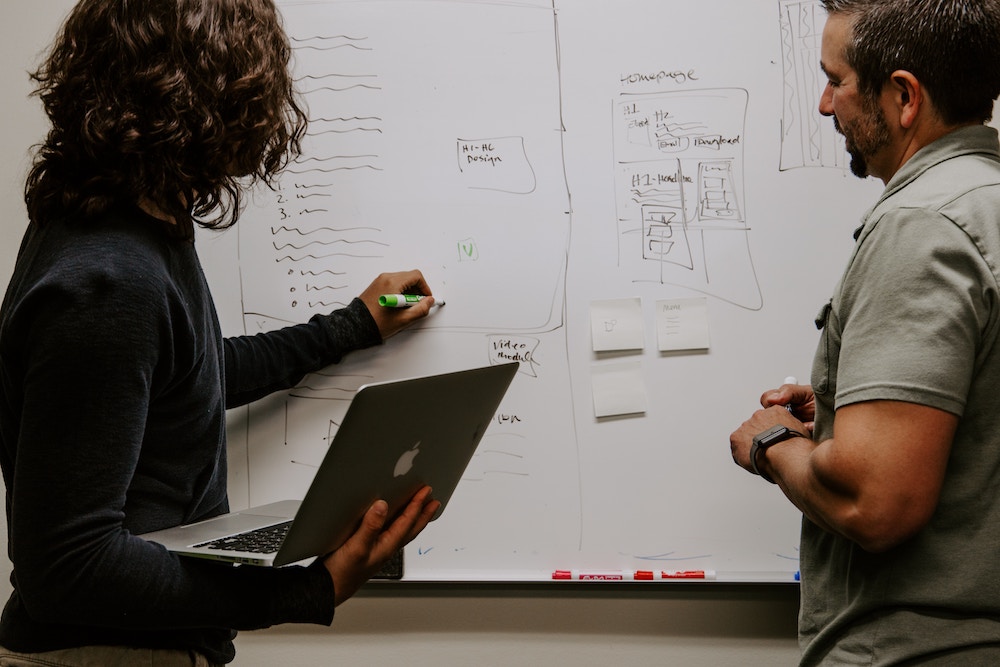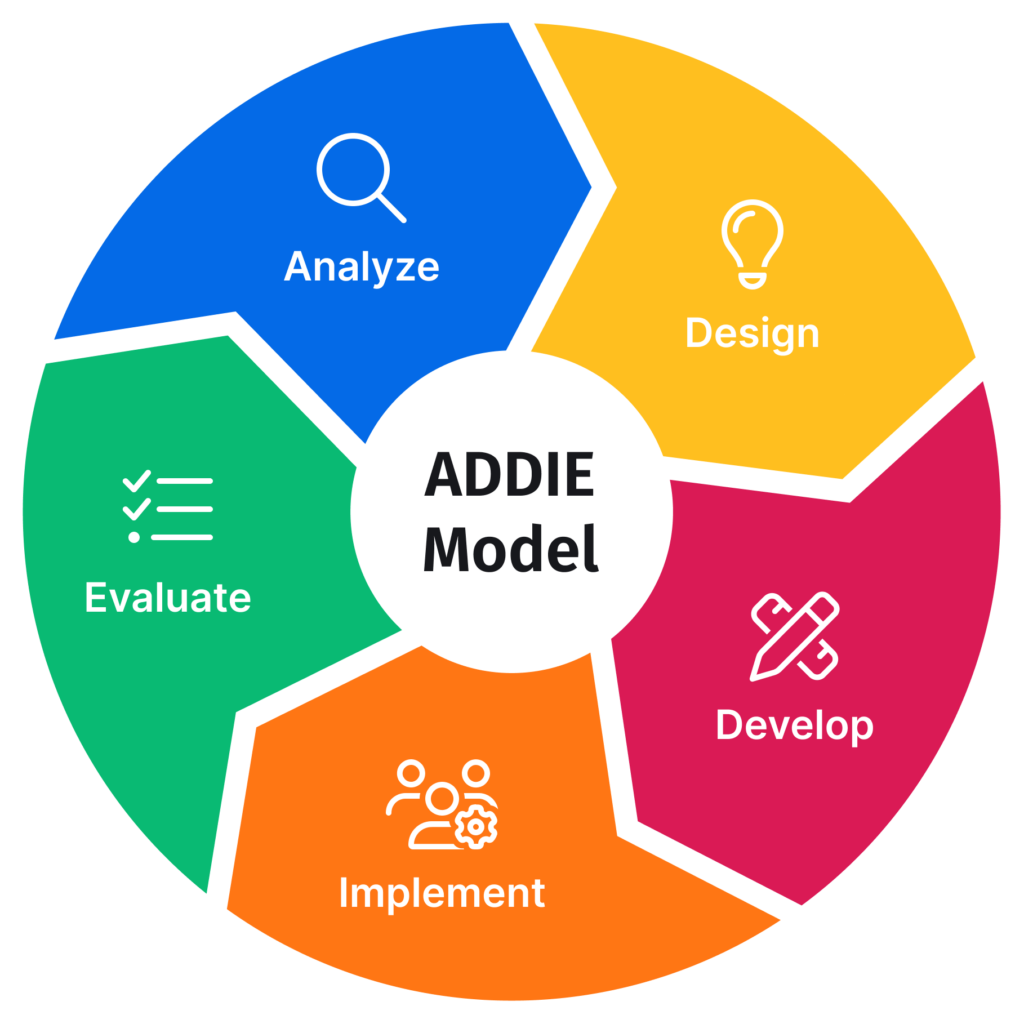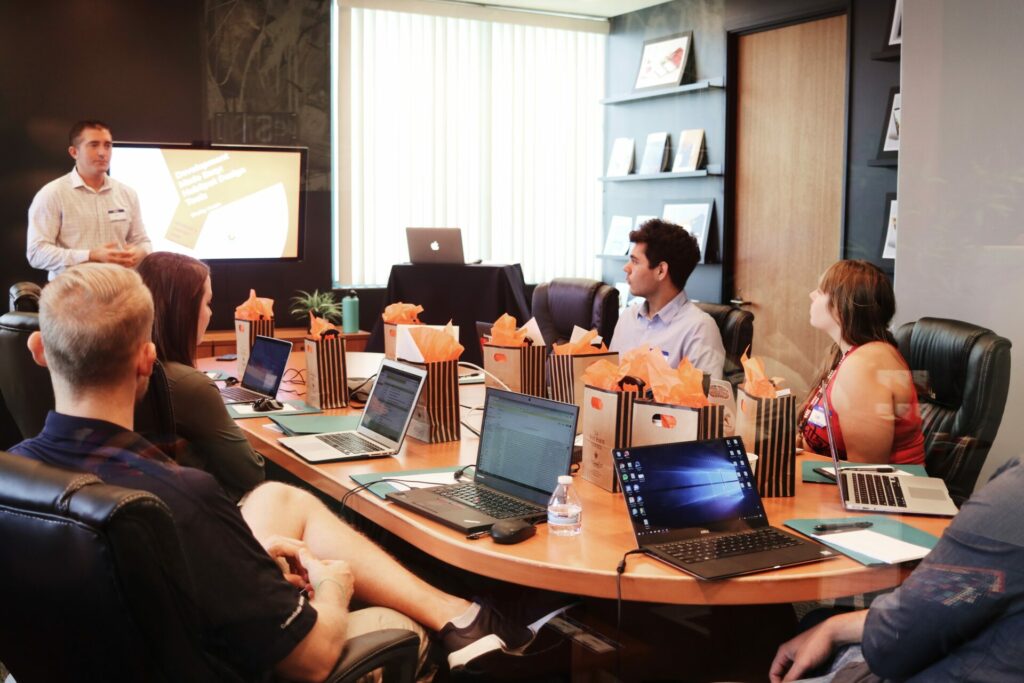

In the world of organizational development, change is a constant process of discovery, analysis and action. An effective OD intervention can be one of the best mechanisms for creating impactful change and helping improve organizational efficiency.
The right OD intervention can help ensure you're solving the right problems, achieve your desired change velocity and also navigate any resistance. In this guide, we'll explore the different types of organization development interventions available to org dev teams and give you practical advice for implementing them along the way.
Join the 150,000+ facilitators using SessionLab.
At the heart of any organizational development strategy is the desire for meaningful change and growth. But whether you’re working in a small startup or a large enterprise, implementing change can pose a challenge and isn’t without its risk.
The process of improving organizational effectiveness can lead to tough decisions and its not uncommon to see resistance to change, difficulties with employee engagement or face friction when implement large-scale change across an entire organization.
While change can be kickstarted in many forms, one of the most effective and common tools used by top HR and change management teams is an OD intervention.
Interventions aim to formalize key actions within a change process and provide a framework for successful change. In this guide, we’ll explore the four types of OD intervention and explain how and when you might deploy them in your organization.
We’ll also share some organizational development intervention examples and give practical advice and tips for implementing these interventions. So whether you’re new to organizational development or you already have an intervention in mind, there’s something for you in this guide.
Organizational Development (OD) interventions refer to a systematic and planned series of actions or activities designed to improve the overall effectiveness, health, and performance of an organization.
To simplify, an OD intervention is a process that is actioned in response to a need for change. You might radically redesign your organizational structure because of inefficiencies in how your org works together and achieves your goals.
If you identify a significant ongoing issue in how your organization operates, innovates or grows, this is often a trigger point for an OD intervention.
For example, if you struggle to find and retain the right talent, your HR and hiring teams might use an OD intervention to identify issues with job description or design, DEI initiatives or onboarding and employee happiness.
OD interventions are typically large in scale and are designed to have a major impact on key areas of how your organization operates. They require the coordination and efforts of multiple departments and the input of senior leadership in order to take effect.
OD interventions follow a process of identifying and exploring the problem, diagnosing the issue further and then carefully developing a strategy that considers people, processes and other organizational factors.
After crafting a solution in the form of a proposed intervention, then comes the challenge of actually enacting that change and then evaluating the impact of the solution.
In the above example, your org dev team would work with affected teams to understand the situation and build an action plan that may radically change the organization.
Perhaps you discover job design is an issue or that there is a communication gap between your SMT and the rest of the company that has left your employees feeling unheard and unvalued.
Finding a solution that adequately addresses organizational challenges requires a thorough exploration and analysis of the problem at hand and the people affected.
While conducting an OD intervention can be a little overwhelming, with the right process you can improve organizational performance, take care of your people and create lasting change.

Organizational development interventions can take various forms, and they are typically categorized into different types based on their focus and objectives. Some common types of organizational development interventions include:
Human process interventions:
Human process interventions focus on improving group dynamics within the organization and how teams work together. Group interventions are common here, and change managers working in this area will likely run workshops and facilitate team building interventions with a desire to improve dynamics and interpersonal relationships on the team.
Techno-structural interventions:
OD interventions in this bracket typically focus on improving team productivity and performance by leveraging new technology and by considering how an organization is structured. Typical actions can include deploying new tools to streamline team workflows, automating processes or shifting organizational structures in order to maximise efficiency and reduce overhead.
Human resource management interventions:
Human resource management interventions typically focus on developing talent, creating employee training plans and otherwise working on how your organizations sources, nurtures and develops your people. Diversity interventions and wellness interventions also fall under this banner and as such, they’re typically implemented and coordinated by HR teams.
Strategic change interventions:
Organization development interventions related to strategy can be the among far reaching and impactful when it comes to improving an organization’s performance. This kind of change often aims to be transformational in nature and is often actioned when the long-term survival of the organization is at risk or there is a desire to radically alter how a company operates.
While other OD interventions exist, as Cummings and Worley noted in their book, Organization Development and Change 9th Edition, most interventions fall under the four types of OD interventions outlined in this guide.
That said, this list is not exhaustive nor are these OD interventions mutually exclusive. The actions your organization will take to create meaningful change will likely feature elements of various intervention types.
When considering what changes and interventions might be most effective, try not to be pigeon-holed into just one type of OD intervention or restrict yourself to set organizational strategies.
Think about the desired end state of your OD initiative and conduct a thorough root-cause analysis to select the most appropriate intervention(s). After implementation, evaluate the efficacy of your actions and be open to using other types of intervention in your ongoing quest to improve organizational efficiency.

The original, best known and most regularly deployed OD intervention are those which focus on human processes. These kinds of interventions aim to improve interpersonal, group and organizational dynamics.
Facing challenges with team culture, communication or conflict resolution between teams and individuals? OD teams will often run interventions in the form of soft skills training, team building programs and improving relationships between different departments.
These can be low effort, such as running a weekly games session for employees to deepen bonds and get to know each other better. They can also include long term programs for conflict resolution and soft skills training, culture committees or mentoring and coaching opportunities for your team.
I recall an early career moment where there was friction between sales and support. Both teams felt misunderstood by the other and were regularly coming into conflict. Not only did this affect team morale, but it also contributed to a decline in our CSAT score AND missed sales targets.
By helping the team understand one another more deeply and creating a clear, collaborative process of handling high ticket customers and sharing information, the issue gradually improved.
Interventions on the individual level can have a massive impact on not only a single person’s happiness or job satisfaction but on how the system operates as a whole. Individual interventions often take the form of one-to-one interactions designed to improve how a single employee relates to their work, their team and themselves. Common interventions at this level can include one-to-one mentoring, individual growth plans, buddy systems and work shadowing programs.
Managers or HR teams might work with specific individuals to help resolve conflicts, build skills or better integrate them into the team. Regular one-to-ones can inform this process, but an individual intervention is often called for when a problem is discovered.
A common trigger point for such an intervention is during an employee feedback process. For example, if a manager has received a lot of feedback from their team that suggests they aren’t managing well, they may get coaching from a senior leader to help them improve their leadership skills.
Group dynamics are an important aspect of how a team functions. Team forming interventions are focused on helping improve those dynamics, creating alignment and helping groups get to know each other more deeply in a safe environment. Interventions designed to help accelerate team cohesion and bring groups together are some of the most common you’ll run, and it’s likely you’re doing some of them already.
Common trigger points for such an intervention can include when a new team is formed, discovering problems with how a team works together or wanting to reassert team values and shared bonds. Team building events, participatory workshops and any shared activities that create opportunities for connection and trust are all common interventions in this area.
Workshops are among the most powerful formats for team forming interventions. When first bringing a team together, you might run a team canvas workshop to help a group align on their values, explore team dynamics and decide how they want to work together.
Alternatively, you might conduct a skills workshop where your team gets to ideate and learn something new as a group. In any case, be sure to support your process with the right workshop tools in order to create engagement and get results.
Purposeful team building activities are another key human process intervention. Simply spending time playing games, having fun or sharing our stories can have a powerful effect on team dynamics. The important thing is providing an opportunity for people to get to know each other more deeply, create bonds and grow together.

When two different departments in your organization are finding it difficult to work together, an intergroup intervention is a great step. Mapping how the two teams would like to collaborate and deepening understanding of the challenges and specifics of each group’s work can help smooth things out and improve efficiency too.
In the sales/support example above, a combination of team building and process design was key to the intergroup intervention we undertook. Only by coming together and talking about the problems while also getting to know each other as individuals were we able to move forward.
For companies with few opportunities for inter-departmental work, simply bringing employees together for a team building activity so they can understand one another better is a powerful step towards change.
Whenever you’re working with people, it’s important to note that everyone is different and what works with one team or individual may not work for another. I recall an occasion where a company-wide team building activity (casino and club night) chosen by upper management was chosen without asking the team how they felt.
While some folks loved it, many people felt uncomfortable or were disengaged. The desired goal of improved team connections wasn’t met and instead, the group ended up feeling more fractured. Especially in the case of intergroup relations interventions, remember to include people from both groups and think about their varying needs!
Choose your intervention with the individual or group affected in mind and where possible, directly include them in the process. For example, an individual development plan should absolutely factor in how the person in question learns best and the unique context of the situation. Processes and systems are good, but don’t forget that the best outcomes arise out of solutions that have those people affected at heart.
One common mistake I’ve seen with organizations deploying change is to assume a single intervention will solve a problem forever. Human processes are all about relationships between people and teams. Like any relationship, these need nurturing over time.
While a single team building event can recharge the tanks and help cement bonds, without care and consistent attention, that hard work can be for nothing.
For example, let’s say you run a company values workshop to help create alignment on the future of the organization and improve company culture. Your team comes together to choose core values and everyone feels good at the end of the session. Then, 6 months later, you ask your team what your values are and nobody can remember what they are. Without follow-up actions and a process of keeping those values alive and present, the desired change in culture has been ineffective.
While most organizational development interventions are ongoing in nature, human processes can prove to be especially liquid and require extra attention from people throughout the system.
People are complex! Be sure to create systems to check-in on progress, continue the good work of an intervention afterwards and reinforce the change you wish to create.
Repetition is a key element of these processes so think not about running a single company event, but how to ensure you continuously build on your company culture.

While large-scale interventions benefit from research, analysis and oversight provided by a change manager, some changes can benefit from speed.
At the human process level, line managers are often the first to see issues and spot opportunities for change. So why not give them the tools and permission to try and create positive changes for their teams?
For example, let’s say that a team member comes to you feeling overwhelmed and stressed because they’re having difficulty finding childcare. In the long-term, a company policy around childcare would be great, but that doesn’t solve the immediate issue for the team members affected.
At a human process level, proactivity and timeliness can make all the difference. Ensure your company policies and organizational culture support managers in making timely, responsible and effective interventions on behalf of their team.
As with any change process, be sure to log and track changes and reflect on the impact. In addition to alleviating difficulties for individuals and teams, smaller, fast-moving intervention techniques can provide important insights for company-wide initiatives.
Human systems are dynamic and ever-changing. Without feedback loops, it’s possible for issues or opportunities within those systems to go unnoticed. For some interventions such as coaching or mentoring programs, feedback is an implicit part of the process.
For others, change managers will need to create a process for gathering feedback in order to monitor, evaluate and improve OD interventions with the input of all stakeholders.
Whatever system you use, it’s also vital that feedback goes both ways. Running a train the trainer course and giving your trainees feedback on their progress is important, but you should also get feedback about the program from trainees, managers and any other stakeholders.
When it comes to human systems, you’ll also find it most effective to have a system for gathering feedback well in advance of any intervention. Try to make giving and receiving feedback a consistent process for your teams and use tools to support the process where possible.

Techno-structural interventions aim to better align an organization’s structure, technology and processes with its goals and objectives. OD interventions in this area can be among the most far reaching for any org dev team and they’re often deployed when change feels paramount for a company’s survival or for maintaining a competitive edge.
Low growth, a rapidly changing market or key areas of a business underperforming? These can be triggers for a techno-structural intervention.
Tasks such as organizational restructuring, process redesign, job enrichment or even downsizing fall under this umbrella. Other common interventions for OD teams include implementing new tools and technologies to improve efficiency, streamline workflows and future proof the company.
In techno-structural interventions, there is often an emphasis on continuous process improvement. Switching to Agile or lean methodologies or embracing total quality management processes like Six Sigma, as made famous by their use at Ford Motor Company, are common tasks.
As large-scale processes that can include changing business direction or radically repositioning your product, these interventions can be a challenge to implement.
Without a change management plan, change can be slow, meet resistance or simply not catch on. Be sure to leverage the skills and expertise of change managers and senior leadership when conducting these kinds of interventions.
Restructuring an organization means rethinking how some or all of your workforce is structured and operates. Who reports to who? Which departments fall under which manager and who is responsible for making decisions that affect different areas of the business?
Common triggers for an organizational restructure include a need for greater revenue or reduced costs, a desire to refocus or change company goals or a move into a new market.
Creating innovative new products or services or simply working to resolve issues with workload, resource management or siloing are also common interventions that require a technological or structural approach.
For example, in a small startup, it’s not uncommon for all of your developers and designers to sit under the same branch in your org chart with a single founding developer as their manager.
For a while, this works and then as you grow, you start seeing bottlenecks in your dev process, and there are too many direct reports for your founding developer to handle while also trying to innovate and place your product in the market.
At this stage, an organizational restructure will be necessary in order to ensure efficiency, avoid burnout and also ensure you have the right skillset present among your dev team.
Rapid growth or reduction in your team size is another trigger for a restructure. Sometimes, this might mean a single department may split or combine with others.
On other occasions, it’s necessary for organizations to completely rethink how the hierarchy of their teams works – for example, switching from a functional org structure, where each department reports to a department head, to a matrix structure, where cross functional teams are put together on a project by project basis.

BPR is a process of radically redesigning how your organization works. It’s a comprehensive model of analyzing, redesigning and optimizing your organizational processes in order to improve business performance.
This is particularly valuable for organizations who need to see significant change in order to remain competitive or where redundancies and inefficiencies in processes are creating massive costs or an inability to meet goals.
Organizations implementing a BPR intervention typically begin by mapping all current business processes and analyzing them for opportunities, gaps and issues. After validating ideas for improvement, the organization will design an ideal future state and begin moving towards it.
By definition, BPR is wide ranging in nature, and team’s working with this kind of intervention should not feel constrained with their suggestions. Removing redundant processes or implementing a new helpdesk to improve the efficiency of your customer support team might be enough to save costs, but what if you fixed the root cause of your largest customer issues or invested in self-serve support?
If your team is finding themselves coming up against the same problems even after a solution or quick-fix has been implemented, you may need to go further. That’s the perfect time for a more thorough and radical appraisal and solution process such as BPR.
Work design interventions are used when an organization wishes to improve the content or organization of the work and responsibilities falling upon individual employees or departments.
The way our work is designed affects how we feel about our job our ourselves. The tasks, working hours or contact points associated with our role can have a massive impact on our overall motivation, engagement and stress.
We all want our teams to be happy and productive, and a work design intervention can cover everything from redesigning job roles and individual tasks, to finding ways to automate or improve processes that impact job satisfaction or productivity.
For example, let’s say that individuals on a team feel stressed because they have a large workload and don’t feel supported in achieving their goals. OD interventions might include redesigning job sepcs, allocating more resources, creating reward and recognition schemes or even improving autonomy and self management.
Deep understanding of the problem is key when considering work design interventions. Be sure to conduct interviews, run a focus group and implement a continuous feedback system so you can see problems emerge and understand whether team’s need more support, job control, enrichment, development opportunties or something else entirely.

While the ideal state is that your processes are well documented in advance of problems arising, it’s not uncommon for there to be gaps in your documentation when you get around to thinking about interventions. In fact, it’s entirely possible that one of the first steps of the problem analysis and diagnosis stage will be to document any missing processes.
Before you start implementing a new process, be sure to take time to understand how your organization operates now. Try to map your processes from end-to-end and be sure to capture all the actors involved in the system. Redesigning a sales process without thinking about how it might impact your support team is a surefire way of causing new problems.
When documenting, be sure to involve stakeholders from across the organization so you can gain an accurate, in-depth picture of your processes. Not going deep enough or speaking to the people who actually enact or work with a process is another pitfall you can avoid by simply speaking to the right people.
Moving forward, aim for each team to document your processes as a matter of habit and ongoing improvement. Not only will it help any changes be smoother should you need to make them but it can help surface issues and opportunities more quickly.
Changing the structure or processes or a large organization is a difficult undertaking but you are not the first person to encounter this challenge. Lean on proven frameworks and the work of other thinkers, experts and organizations.
At SessionLab, we transitioned to an EOS framework to help us nail down our strategy, create a new org chart and organize our work. We found that the structure, advice and existing knowledge around EOS allowed us to make better decisions, transition faster and focus on implementation, rather than trying to come up with an entirely new solution.
No two organizations are the same but there’s something to learn from how others have changed for the better. Try looking at how successful organizations at a similar maturity or size to your own operate or better yet, look at those that have solved some of the challenges you’re facing. Join a masterclass or community – the ongoing support and insight of peers can also be invaluable in actioning change.

When thinking about introducing new processes it’s imperative that you first explore and diagnose a problem correctly. When it comes to how teams and departments operate, it’s not uncommon for hidden variables or unspoken actions within the system to be at the heart of your issues. So how do you bring them out into the open and encourage openness from your team?
Speaking to major stakeholders and business people across the org is vital, but it’s often not enough to just send out an email asking for input.
Workshops are some of the most powerful intervention techniques available to change managers and org dev teams. Ideating on possible solutions collaboratively is often a more effective way to truly discover the root cause of issues and create solutions that account for the people who will be most affected by the process you are changing.
SessionLab is an effective tool for designing and delivering the workshops that you’ll use to support your OD intervention process. Invite stakeholders to co-create your agenda in real-time and involve them in the change process. Save time designing your key workshops and ensure your process is efficient with SessionLab.
HRM interventions concentrate on developing and managing human resources within the organization. Examples include improving hiring processes, creating and reinforcing diversity, improving performance management processes and building opportunities for career development. People are one of the most important parts of how an organization functions and HRM interventions are designed to directly impact the people working in your company.
As the name would suggest, these kinds of interventions are often deployed by or in conjunction with HR teams in response to difficulties with hiring or retaining staff, employee satisfaction or problems with performance.
Effective change tracking, strong feedback loops and good communication are essential elements of a successful HRM intervention. Programs and initiatives that form the backbone of human resource development – such as wellness or training programs – are ongoing in nature.
You’ll often find that such an intervention takes time to achieve its chosen goal and the strength of your research is a key element of success. Purposeful interventions that incorporate the direct input of your employees are more likely to be fit for purpose and create long-lasting change.